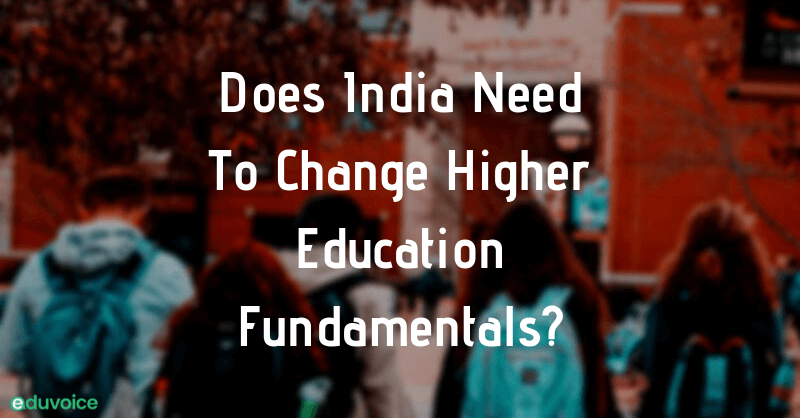Higher Education Needs to Change Fundamentally to Push India
India is serving a population of almost 1.4 billion, the Indian higher education sector is colossal. Addressing the necessities of such a large, dispersed and differing population has its own challenges.
While primary education has witnessed increasing penetration in India, it is higher education that needs our immediate attention. Higher education consists of vocational education, university education, technical and management education.
Vocational training alludes to hands-on and practical training in explicit career tracks, while university education involves students enrolling in general degree programs at the undergraduate level. The Indian Institutes of Technology (IITs) and National Institutes of Technology (NITs) are the best-known institutions in India offering undergraduate, post-graduate, and doctoral studies in various technical fields, while the Indian Institute of Management (IIMs) and organizations like MDI, ISB, FORE, FMS and S P Jain are the best known for granting management skills.
The best challenge the higher education sector is confronting is quality and significance. The 2019 edition of the India Skill Report, a yearly study and a joint activity of the All India Council for Technical Education (AICTE) and Association of Indian Universities (AIU), demonstrates that only 36.4 per cent MBAs are considered employable!
The employability rate of building graduates is moderately better, yet at the same time at a low 57.1 per cent. The review parameters incorporate employability and an ability test.
More than 3,10,000 graduates crosswise over disciplines showed up for the test and were assessed on various subjects, including English, basic reasoning, numerical aptitude, domain knowledge, and behavioural competence.
Wild over-expansion in certain regions, (for example, designing) and under-expansion in others has brought about unsatisfactory institutions with low measures of educational plan and teaching method.
Contracting government budgetary allocation to education has prompted a financing mash in higher education in India. This has, thusly, brought about the quick and some would state, spontaneous development of private higher education.
These institutions money themselves through donations, capitation charges, and high tuition expenses. It implies that quality private schooling is open only to a little level of the population that can manage the cost of it.
A few evaluations put higher education enrollment rates (level of 18-23-year-olds in formal higher education) in high single digits! Enrollment rates are clearly higher in urban zones, inferring in this manner that rustic enrolling is poor, as is sex dissimilarity in enrollment.

The management education sector has developed exponentially over the most recent couple of years on the back of interest for management graduates. Since ‘management’ is a moderately emotional subject, it’s little wonder that this field experiences considerably low-quality institutions, instruction, and educational plan. The net outcome; low employability of MBA graduates.
Regulation is unmistakably one of the most significant and pressing zones of change. The present government has proclaimed its intention of establishing a solitary higher education controller, a key recommendation by various advisory groups that have inspected the poor condition of higher education in India.
Reinforcing of the vocational education sector will open up open doors for students who need to concentrate on their careers by structure explicit and applicable ranges of abilities. The courses should be reasonable, directed and fully informed regarding industry needs.
As disruption flourishes and makes present ranges of abilities repetitive, higher education needs to rethink itself with current industry needs.
The ascent of the IT sector has constrained relevance to higher education. Simultaneously, course contributions likewise should be widened beyond just IT and designing to cover zones, for example, liberal arts.
On the off chance that India is to accomplish its potential and spot in the worldwide economy, higher education should do a reasonable degree of truly difficult work. This will include a restored spotlight on the educational program and instructional method, personnel capacities, explore abilities, industry organizations, and foundation. The street is a long and hard one, yet the destination holds a great deal of guarantee.
For More Such Articles, News Update, Events, and Many More Click Here.

